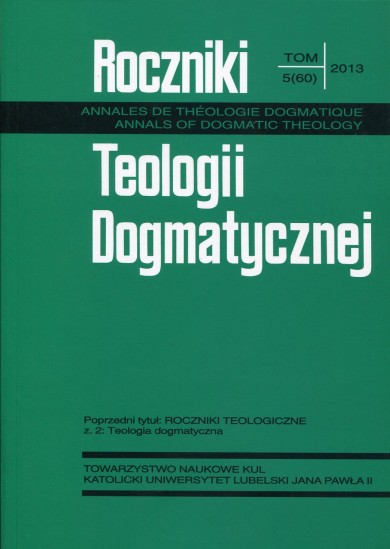Jana Dunsa Szkota nauka o Osobie w Trójcy
John Duns Scotus’ Teaching about Person in Trinity
Author(s): Benedykt HuculakSubject(s): Christian Theology and Religion
Published by: Katolicki Uniwersytet Lubelski Jana Pawła II - Wydział Teologii
Keywords: Person; Trinity; relation; essence; substance; hypostasis
Summary/Abstract: The two main Christian truths, about the triune God and the incarnation of the Son, are deeply connected with each other, first of all because it is the Second Person of the Trinity, who assumed the human nature in the womb of the Blessed Virgin Mary. Also the question, who is Jesus Christ with respect to him, who for himself was the Father, and to him, whom he called Holy Spirit, marked out the way of the maturing of the doctrine about Holy Trinity. The key issue, how the trinity of these Subjects agreed with the unalterable truth of the unicity of God, was answered in distinct ways in Byzantium and in the Latin West, where the regula fidei was seized already by Tertullian about the year 200. The majority of the Greeks, devoted to Plotin and Origen, in the IV century rejected the teaching of the Council of Nicea, although later they accepted the word homo-oúsios (consubstantial), but explained it in the sence of homoi-oúsios (similar according to the substance); hence they are called „neo-Nicenes (Jungnizäner)”. Besides, in the Aristotelian current of the Western theology in the XIII century there apparered a coloureless essentialism and a concept of divine person as mere subsistent relation (relatio subsistens). Both these scarcities remedied blessed John Duns Scotus OFM, in whose footsteps – more than 300 years later – a large degree followed Francis Suarez SJ.
Journal: Roczniki Teologii Dogmatycznej
- Issue Year: 2011
- Issue No: 3 (58)
- Page Range: 113-140
- Page Count: 28
- Language: Polish

